Police officers face many difficult challenges during the course of their careers, challenges most people would avoid at all costs. For example, exchanging a few rounds of live ammunition with a doped-up bad guy. Or how about working really long, odd hours, or the fear of losing everything you own, including your freedom, family, and possibly your life, should you make a bad decision in that fraction of a split second you have to make it.
And there’s this—the joy of being slapped, hit, punched, scratched, spit on, stabbed, cut, cursed at, having urine or feces thrown on you, puked on, bled on, wearing goofy clothing and heavy gear, and seeing people hurt, sick, and even die right front of you knowing there’s not a darn thing you can do about it.
The danger level of the job is extremely high and getting worse every day. All it takes is a couple visits to this blog on any given Friday to know how dangerous the job really is.
And then there’s the ever popular low pay, little time off, missing holiday time with your family (if you still have one), high suicide rate, alcoholism, drug abuse, fear of serious injury or death, and divorce.
Still, through all the pain and agony and odd baggage that’s attached to every police officer, there’s always someone out there who’ll agree to enter into relationships with the poor saps. And that’s a good thing, right? Well, not always, and there’s a secret I’d like to share with you, the writer. First we must address the fact that you guys don’t always get cop romances right.
Here’s why.
The Three “Romance” Categories of Fictional Cops
- The ones in relationships, the Hallmark movie/Nicholas Sparks-happy-ending kind of cop. Jonathan Kellerman’s Alex Delaware and Robin Castagna come to mind, even though the partners sometimes experience and on-again-off-again sort of relationship. And there’s Faye Kellerman’s crime-solving duo Peter Decker, a lieutenant in the LAPD, and his Orthodox Jewish wife Rina Lazarus.
- The sad sacks who couldn’t hang on to a steady love interest if he/she were a conjoined twin. Little black dress-wearing Kinsey Millhone, bless her heart, well, the closest thing she had to a longterm relationship is with her dear landlord, 80-something Henry Pitts, a baker who spends his free time creating crossword puzzles.
- Then there’s the cop who’s so screwed up emotionally even mental hospitals lock their doors when they see him coming. The latter never finds true love, obviously, and remains a loner, stumbling through book after book after book. I’ll leave this one to your imaginations and personal favorites.
But there’s another kind of relationship, one that’s not really talked about in the world of fiction, and it’s definitely kept under wraps in the real world. But I’m spilling the beans, right here and right now. But you must swear to secrecy because, well … it’s a taboo topic!
We Tried to Warn Them!
Part of the exit speech we presented to new recruits leaving the police academy consisted of a few basic warnings about the potential career-ending temptations cops are sometimes faced with, like access to tons and tons of cash, drugs, alcohol, the fast life, prostitutes, abuse of power … and Badge Bunnies.

Badge bunnies? What the heck are badge bunnies? That was my reaction, too, when I first heard about them during the police academy superintendent’s “Welcome to the police officer family” speech during my last day at the police academy.
* Please don’t shoot the messenger. I’m not being sexist, just relaying some very real information. Of course this does work both ways. There are indeed male badge bunnies.
The term badge bunny is often defined as (from Urban Dictionary):
Badge Bunny: A female that goes out with only cops and firemen.
Badge Bunny: A female who enjoys “boinking” and actively pursuing sexual relationships with cops.
Badge Bunny: A female, usually of barely legal age, who spends her time chasing police officers, offering her “services” in hopes of gaining status among her badge bunny friends. (Yes, there are many cop groupies out there).
Badge Bunny Synonyms – holster sniffers, holster honeys, seat warmers, fender lizards, pig pals, beat babes. Cop wives refer to them by other names, such as whores, sluts, cause for divorce, and alimony bait.
New cops, the ones fresh out of the academy, are the officers who are most vulnerable to an attack from the vicious badge bunnies. They can’t help it, though. Recruits are young, good looking, and freshly toned from weeks and weeks of exercise and other training. They have shiny new equipment, sharply creased uniforms, tight haircuts, but more importantly, they have guns and badges! And they’re extremely naive.
Graduation day at the academy is like sending a pack of Roadrunners out into a world of Wile E. Coyotes. Badge Bunnies know the rookie’s weaknesses because they’ve studied the uniformed species for a very long time and they know how to cull the weak from the herd.
How does a badge bunny attack? They’re successful in various ways. For the sake of time and space I’ll list a few their deadly methods of operation.
- The fake car breakdown, needing an officer’s assistance.
- The fake prowler call, answering the door in a sexy outfit, or nothing at all.
- The grocery store maneuver. You couldn’t reach the Special K even though you’re a good foot taller and eighty pounds heavier than the cop. Yeah, right.
- Tapping the brake pedal repeatedly when they pass a target police car. The rookie officer sees the flashing brake lights each time the car passes his patrol car. Hmm, she must be signaling him. Is she in trouble? Or is she trouble …
- Speeding, knowing she has all the ammo she needs to get out of the ticket.
- Hanging out in cop bars, and gyms where cops are known to workout.
- Hanging out in restaurants, coffee shops, etc., frequented by graveyard shift cops.
- Hanging out at sporting events, especially softball games played by cop teams.
- Wearing tee shirts with logos that read, I Love Cops.
- Establishing friendships with police dispatchers for the purpose of meeting their gun-toting coworkers.
Relationships with badge bunnies rarely last. In fact most of them rarely make it into the light of day. These are secret relationships—brief meetings, encounters, and … well, I’ll leave it at that. I know, your next question is, “Since part of the attraction is the uniform and the cool cop equipment, where do they meet for the clandestine ‘encounters?'” How about …
- patrol cars – inside and out (lots of things to hold onto – light bars, spotlights, handcuffs…)
- surveillance vans
- police station warehouses and property rooms
- department offices
- hotels
- small airport runways (for the deputies working the rural areas)
- wooded areas
- industrial parks
- SWAT vehicles
Well, you get the idea.
Some badge bunnies keep a scorecard and move on quickly to the next guy with a gun. Sometimes, but not often, the encounters turn into lasting relationships, with kids, nice homes, cute puppies, picket fences, and everything else that comes with a solid marriage.
I offered a brief statement to the recruits I trained when I was a field training officer. It went something like this, “Keep your gun in your holster and you won’t have to worry about shooting the wrong person.” Now, there were two messages there, right? However, rookies rarely listened to the hidden meaning.
I could practically read their thoughts the second I said those words, and I knew they wanted to say to me, “Be vewy, vewy quiet. I’m hunting wabbits.”

Okay, so you’re a bit concerned that you may be experiencing a bit of badge-bunnyitis? Well, if you have any two of these symptoms, you should steer clear of all police stations until the feelings pass.
- Like moths to a flame, you are attracted to bright and shiny things, especially badges and guns.
- You prefer handcuffs and leg irons over diamond bracelets and anklets.
- You often speed past police cars, pull over, and “assume the position” before the officer catches up to you … even if it’s the day of your wedding … to someone else.

4. In anticipation of a pat-down, you attach your apartment key to a weapon you’ve hidden beneath your clothing.
5. 911 to you is free access to phone sex.
6. You often initiate high speed pursuits. However, it is you who’s doing the chasing.
7 The scent of gun oil is your preferred aphrodisiac.
8. The sounds of leather creaking and keys jingling sends your heart into pitter-patter overdrive.
9. Blue lights and sirens = foreplay.
10. The phrase that makes your knees turn to jelly is,“Turn around and place your hands behind your back.”
* Obviously, this piece is intended as a tongue-in-cheek look at a situation that’s very real. In this article, though, I’m only referring to the bad bunnies—the scorekeepers. However, please know there are plenty of folks who are simply attracted to a certain kind of person, especially the men and women whose career choice includes wearing a uniform as part of their means to earn a living, and they are wonderful people who have wonderful, loving, meaningful and lasting relationships. The others, well …

For over a dozen years, the Writers’ Police Academy (WPA) has delivered scores of outstanding workshops, classes, presentations, live demonstrations, and actual hands-on training, all taught by some of the county’s top experts. We’ve also offered MurderCon, a special event, both as an in-person event and virtually. In addition, in 2020 we launched Writers’ Police Academy Online, a series of live, interactive daylong seminars featuring acclaimed experts and well-known bestselling authors.
Our advertising campaign typically consists of word of mouth, an annual (inexpensive) ad on the site “ShawGuides,” and through the use of Facebook promotion—a simple $100 ad prior to the opening of each registration. Since so many writers have a presence on social media advertising on Facebook was an obvious choice to reach our target audience and we’ve done so for years, including advertising the January 2021 seminar. That, and we do all that we can to keep expenses to a bare minimum in order to offer low registration fees.
As many of you know, the WPA exists solely to help writers and, in doing so we’ve always maintained a neutral environment about politics, race, religion, gender, sexual preferences, etc.
Needless to say, I was shocked when Facebook rejected the ad I submitted yesterday for the upcoming February 27 seminar “Search Dogs, Search Warrants, a Search for Words, and Lies.” I immediately appealed but the ad was again instantly rejected. I even re-designed the ad, but no luck. Another rejection. Their final message to me was that the ad was rejected because it includes “Social Issues, Elections or Politics.” Now that was puzzling. I’d already had to stop using our logo, the “gun/pencil” because it was deemed as offensive to some and portrayed violence.

The situation is extremely frustrating for a couple of reasons—we can’t advertise the event in time for the February 27 seminar, and there’s no means to speak with anyone at Facebook who could explain what it is that’s offensive about the ad pictured below.

So I need your help, please, to spread the word about this fabulous, unique event. The lineup of classes and instructors is superb. If you will, share it on social media, tell your friends, announce it at your writer groups, etc. It’s okay to post and share. I’m just not permitted to purchase an ad for the event.
Here are the full details, and I thank you in advance for your support!
“Search Dogs, Search Warrants, a Search for Words, and Lies”

When: February 27, 2021
This daylong live and interactive seminar features three renowned professionals who will share intimate knowledge of K-9 search and rescues and the recovery of human remains; laws and procedures governing search warrants, pursuits, and police use of force; how detectives use the words of suspects and witnesses—nouns, pronouns, extra words, missing words—to detect deception or hidden information.
At the end of day international bestselling author Heather Graham presents a dynamic workshop on the craft of writing titled “It’s All in the Words.”
Instructors include Carrie Stuart Parks, Sheri Lewis Wohl, Wisconsin Judge Kevin Rathburn, and the fabulous Heather Graham Pozzessere!
Registration is officially open. Reserve your seat today!
https://writerspoliceacademy.online
February 27, 2021 – $99
Three renowned professionals share intimate knowledge of K-9 search and rescues and the recovery of human remains; laws and procedures governing search warrants, pursuits, and police use of force; how detectives use the words of suspects and witnesses—nouns, pronouns, extra words, missing words—to detect deception or hidden information.
At the end of this daylong, live and interactive seminar, international bestselling author Heather Graham presents a dynamic workshop on the craft of writing titled “It’s All in the Words.”
Schedule (Times are EST)
10:30 – Login and Test
10:45 – Welcome
11:00 – 12:20
Search Warrants, Pursuits, and Police Use of Force
This course will describe the general legal standards for the use of force by police such as warrants, including anticipatory, knock, and No Knock, warrants and pursuits. Instructor, Kevin Rathburn
12:20 – 12:50
Break
12:50 – 2:10
More than the Nose: K9 Search Teams in the 21st Century
K9 Search Teams in the 21st Century is a journey into the world of canine search teams. What does it take to be field ready? What makes a good search dog? Learn the difference between what it looks like on TV and what it’s really like out in the field. Learn how and why it’s changing from search and rescue volunteers to unpaid professionals. Instructor Sheri Wohl
2:20 – 3:40
Don’t LIE to Me!
Law enforcement uses numerous tools to identify deception in witnesses and suspects, depending on their background and training. Learn one of the more unique skill sets in recognizing deception through language–by reviewing the written statements. Understand how the very nouns, pronouns, extra words, missing words, and other clues alert detectives to deception or hidden information. Add richness and depth to your writing by utilizing and weaving content statement analysis into your manuscripts. Instructor, Carrie Stuart Parks
3:50 – 5:10
“It’s all in the Words”
A dynamic workshop on the craft of writing taught by one of the all-time great authors of suspense, historical romance, vampire fiction, time travel, occult, and Christmas family fare. Instructor, Heather Graham
5:10
Final words
Instructor Bios:
 Carrie Stuart Parks is an award-winning, internationally known forensic artist. She travels across the US and Canada teaching courses in forensic art to law enforcement professionals including the FBI, Secret Service, and RCMP, and is the largest instructor of forensic art in the world. Her best-selling novels in the mystery/suspense/thriller genre have garnered numerous awards including several Carols, Inspys, the Christy, Golden Scroll, Maxwell, and Wright. As a professional fine artist, she has written and illustrated best-selling art books for North Light Publishers.
Carrie Stuart Parks is an award-winning, internationally known forensic artist. She travels across the US and Canada teaching courses in forensic art to law enforcement professionals including the FBI, Secret Service, and RCMP, and is the largest instructor of forensic art in the world. Her best-selling novels in the mystery/suspense/thriller genre have garnered numerous awards including several Carols, Inspys, the Christy, Golden Scroll, Maxwell, and Wright. As a professional fine artist, she has written and illustrated best-selling art books for North Light Publishers.
 Sheri Lewis Wohl is a 30-year veteran of the federal judiciary, a search and rescue K9 handler, and the author of more than fifteen novels, several of which feature search dogs. She is a field ready member of search and rescue in Eastern Washington and for the last nine years, has been a human remains detection K9 handler deployed on missions throughout Washington, Idaho, and Montana.
Sheri Lewis Wohl is a 30-year veteran of the federal judiciary, a search and rescue K9 handler, and the author of more than fifteen novels, several of which feature search dogs. She is a field ready member of search and rescue in Eastern Washington and for the last nine years, has been a human remains detection K9 handler deployed on missions throughout Washington, Idaho, and Montana.
Sheri has a Bachelor’s degree in Psychology and Communications from Eastern Washington University and a Master’s degree in Literature from California State University, Dominguez Hills.
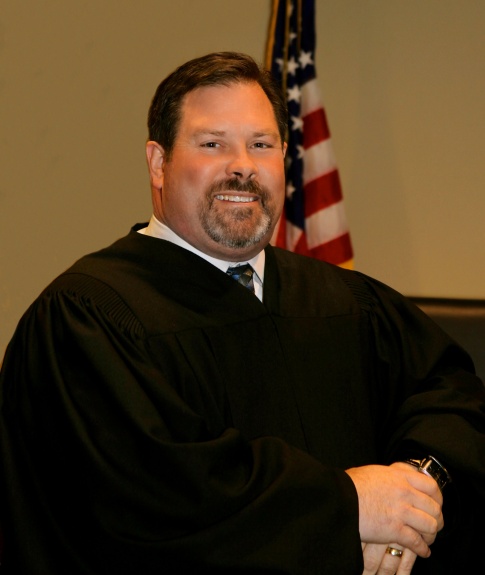 Kevin Rathburn became a full-time faculty member at Northeast Wisconsin Technical College in 2000 after serving as an adjunct instructor for nine years. Prior to that, Mr. Rathburn served for ten years as an Assistant District Attorney for Brown County in Green Bay, Wisconsin. In 2004, Mr. Rathburn became Municipal Judge for the Village of Suamico. Mr. Rathburn holds BAs in political science and economics from St. Norbert College (1987) and a JD from Marquette University Law School (1990).
Kevin Rathburn became a full-time faculty member at Northeast Wisconsin Technical College in 2000 after serving as an adjunct instructor for nine years. Prior to that, Mr. Rathburn served for ten years as an Assistant District Attorney for Brown County in Green Bay, Wisconsin. In 2004, Mr. Rathburn became Municipal Judge for the Village of Suamico. Mr. Rathburn holds BAs in political science and economics from St. Norbert College (1987) and a JD from Marquette University Law School (1990).
While in Law school, Mr. Rathburn served as a law clerk to several Milwaukee Circuit Court Judges handling civil and criminal matters and the appeal of cases from local boards and municipal court in Milwaukee, Wisconsin. He also completed an internship in public sector labor law with the law firm of Mulcahy and Wherry and an internship with Blue Cross & Blue Shield Insurance Company.
Mr. Rathburn is a State Certified Instructor for the Wisconsin Technical College System. He is also certified by the Department of Justice, Training and Standards Board in the areas of Child Maltreatment, Constitutional Law, Corrections Law, Courts and Jurisdiction, Criminal Law, Introduction to Criminal Justice, Criminology, Domestic Violence, Ethics in Criminal Justice, Interviews and Interrogation, Juvenile Law, Report Writing, Sexual Assault and Sensitive Crimes. Mr. Rathburn recently helped create Constitutional Law and Juvenile Law Manuals and update the Criminal Law Manual for the WI. Dept. of Justice, Training and Standards Bureau.
Mr. Rathburn has been a member of the Department of Justice Legal Context Advisory Committee since 2005. He has also served as a Commissioner on the Governor’s Commission on School Violence and the Governor’s Juvenile Justice Commission. He is a past member of the Brown County Youth Aids Committee, Brown County Council on Child Sexual Abuse, Brown County Subcommittee on Underage Drinking, Brown County Consortium on Dysfunctional Families and St. Vincent Hospital’s Child Health Team.
Since 1991 Mr. Rathburn has made presentations on a wide variety of legal topics at numerous conferences including the Wisconsin Jail Association, Wisconsin Juvenile Officers and Juvenile Intake Workers, the State of Wisconsin DARE Officers Association, the Wisconsin LETAO, the Wisconsin Criminal Justice Instructors, the Wisconsin Arson Investigators and the Wisconsin Criminal Investigator’s Association. Mr. Rathburn frequently provides legal updates for law enforcement and correction agencies. He has also provided in-service training for Unified Tactical instructors, administrators, corrections officers, dispatchers and casino security staff.
Since 2007, Mr. Rathburn has been a frequent speaker for the State Supreme Court in its training of Municipal Judges and Court Clerks. Since 2012 Mr. Rathburn has provided Basic Intake Training for Juvenile Intake Workers throughout Wisconsin. He is a trainer for the Wisconsin Child Welfare Professional Development system. Since 2016 Mr. Rathburn has been a featured presenter at the annual Writer’s Police Academy. He recently completed work with James Patterson and Maxine Paetro on a crime novel (The 17th Suspect). He has also presented to officers from England and the Caribbean Islands on multiple occasions in recent years.
In 1994, Mr. Rathburn received the Optimist Law Award for his contribution to the legal field. He also received an Outstanding Teacher Award in 2004, 2005, & 2006 from Who’s Who Among Teachers in American Universities & Colleges and from Who’s Who in Collegiate Faculty in 2007 and 2008. In 2017-18 he was included in Who’s Who in Technical College Faculty. In 2019, Mr. Rathburn received the Excellence in Teaching Award from Northeast Wisconsin Technical College.
Mr. Rathburn says his family is the most important part of his life. He spends as much time as possible with his wife, Beth, and their three sons, Sam, Jack, and Ben. He enjoys landscaping, gardening and walks with Beth and their dog Sophie. He spends many of his late evening hours reading and writing on legal topics. He also likes reading espionage or mystery novels and watching movies; especially westerns. He is an avid Packers fan and enjoys following the Badgers, Brewers, and Bucks
 New York Times and USA Today bestselling author, Heather Graham, majored in theater arts at the University of South Florida. After a stint of several years in dinner theater, back-up vocals, and bartending, she stayed home after the birth of her third child and began to write. Her first book was with Dell, and since then, she has written over two hundred novels and novellas including category, suspense, historical romance, vampire fiction, time travel, occult, sci-fi, young adult, and Christmas family fare.
New York Times and USA Today bestselling author, Heather Graham, majored in theater arts at the University of South Florida. After a stint of several years in dinner theater, back-up vocals, and bartending, she stayed home after the birth of her third child and began to write. Her first book was with Dell, and since then, she has written over two hundred novels and novellas including category, suspense, historical romance, vampire fiction, time travel, occult, sci-fi, young adult, and Christmas family fare.
She is pleased to have been published in approximately twenty-five languages. She has written over 200 novels and has 60 million books in print. Heather has been honored with awards from booksellers and writers’ organizations for excellence in her work, and she is the proud to be a recipient of the Silver Bullet from Thriller Writers and was awarded the prestigious Thriller Master Award in 2016. She is also a recipient of the Lifetime Achievement Award from RWA. Heather has had books selected for the Doubleday Book Club and the Literary Guild, and has been quoted, interviewed, or featured in such publications as The Nation, Redbook, Mystery Book Club, People and USA Today and appeared on many newscasts including Today, Entertainment Tonight and local television.
Heather loves travel and anything that has to do with the water, and is a certified scuba diver. She also loves ballroom dancing. Each year she hosts a Vampire Ball and Dinner theater raising money for the Pediatric Aids Society and in 2006 she hosted the first Writers for New Orleans Workshop to benefit the stricken Gulf Region. She is also the founder of “The Slush Pile
Players,” presenting something that’s “almost like entertainment” for various conferences and benefits. Married since high school graduation and the mother of five, her greatest love in life remains her family, but she also believes her career has been an incredible gift, and she is grateful every day to be doing something that she loves so very much for a living.

www.writerspoliceacademy.online
 Marriage is practically taboo in crime fiction. Rarely do fictional law enforcement officers enjoy the company of spouses or serious relationships. Yes, some are haunted by the tormented spirits of dead husbands or wives, but not living, breathing people. I suppose it’s easier to write a tale about a person who’s single, but cops in the real world do indeed marry, and some do so four or five times since the job truly can wreak havoc on married life. For the most part, though, family life is important.
Marriage is practically taboo in crime fiction. Rarely do fictional law enforcement officers enjoy the company of spouses or serious relationships. Yes, some are haunted by the tormented spirits of dead husbands or wives, but not living, breathing people. I suppose it’s easier to write a tale about a person who’s single, but cops in the real world do indeed marry, and some do so four or five times since the job truly can wreak havoc on married life. For the most part, though, family life is important.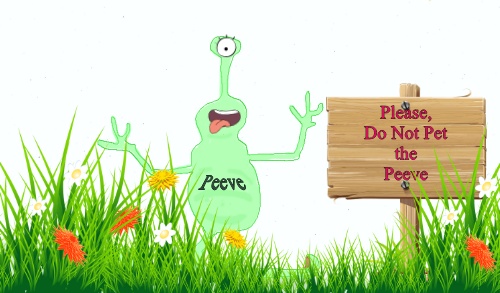 There you go, eight pet peeves of many cops who
There you go, eight pet peeves of many cops who 



 And, as always, smack-dab in the center of the front door were three fairly fresh chicken feet that were tied together at the ankles with a piece of colorful twine. The collection of gnarly toes and bony knuckles dangled from a rusty thumbtack. Nothing odd at all … for Miss Evelyn. I knocked again. The “decor” hadn’t changed in all the years I’d gone there. Not a thing.
And, as always, smack-dab in the center of the front door were three fairly fresh chicken feet that were tied together at the ankles with a piece of colorful twine. The collection of gnarly toes and bony knuckles dangled from a rusty thumbtack. Nothing odd at all … for Miss Evelyn. I knocked again. The “decor” hadn’t changed in all the years I’d gone there. Not a thing.

 Carrie Stuart Parks is an award-winning, internationally known forensic artist. She travels across the US and Canada teaching courses in forensic art to law enforcement professionals including the FBI, Secret Service, and RCMP, and is the largest instructor of forensic art in the world. Her best-selling novels in the mystery/suspense/thriller genre have garnered numerous awards including several Carols, Inspys, the Christy, Golden Scroll, Maxwell, and Wright. As a professional fine artist, she has written and illustrated best-selling art books for North Light Publishers.
Carrie Stuart Parks is an award-winning, internationally known forensic artist. She travels across the US and Canada teaching courses in forensic art to law enforcement professionals including the FBI, Secret Service, and RCMP, and is the largest instructor of forensic art in the world. Her best-selling novels in the mystery/suspense/thriller genre have garnered numerous awards including several Carols, Inspys, the Christy, Golden Scroll, Maxwell, and Wright. As a professional fine artist, she has written and illustrated best-selling art books for North Light Publishers. Sheri Lewis Wohl is a 30-year veteran of the federal judiciary, a search and rescue K9 handler, and the author of more than fifteen novels, several of which feature search dogs. She is a field ready member of search and rescue in Eastern Washington and for the last nine years, has been a human remains detection K9 handler deployed on missions throughout Washington, Idaho, and Montana.
Sheri Lewis Wohl is a 30-year veteran of the federal judiciary, a search and rescue K9 handler, and the author of more than fifteen novels, several of which feature search dogs. She is a field ready member of search and rescue in Eastern Washington and for the last nine years, has been a human remains detection K9 handler deployed on missions throughout Washington, Idaho, and Montana. Kevin Rathburn became a full-time faculty member at Northeast Wisconsin Technical College in 2000 after serving as an adjunct instructor for nine years. Prior to that, Mr. Rathburn served for ten years as an Assistant District Attorney for Brown County in Green Bay, Wisconsin. In 2004, Mr. Rathburn became Municipal Judge for the Village of Suamico. Mr. Rathburn holds BAs in political science and economics from St. Norbert College (1987) and a JD from Marquette University Law School (1990).
Kevin Rathburn became a full-time faculty member at Northeast Wisconsin Technical College in 2000 after serving as an adjunct instructor for nine years. Prior to that, Mr. Rathburn served for ten years as an Assistant District Attorney for Brown County in Green Bay, Wisconsin. In 2004, Mr. Rathburn became Municipal Judge for the Village of Suamico. Mr. Rathburn holds BAs in political science and economics from St. Norbert College (1987) and a JD from Marquette University Law School (1990). New York Times and USA Today bestselling author, Heather Graham, majored in theater arts at the University of South Florida. After a stint of several years in dinner theater, back-up vocals, and bartending, she stayed home after the birth of her third child and began to write. Her first book was with Dell, and since then, she has written over two hundred novels and novellas including category, suspense, historical romance, vampire fiction, time travel, occult, sci-fi, young adult, and Christmas family fare.
New York Times and USA Today bestselling author, Heather Graham, majored in theater arts at the University of South Florida. After a stint of several years in dinner theater, back-up vocals, and bartending, she stayed home after the birth of her third child and began to write. Her first book was with Dell, and since then, she has written over two hundred novels and novellas including category, suspense, historical romance, vampire fiction, time travel, occult, sci-fi, young adult, and Christmas family fare.

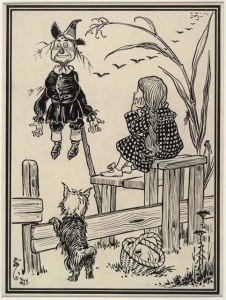 *The Wizard of Oz premiered on the big screen in 1939, eventually making its way to television in 1956. Grigsby was behind bars for both. Judy Garland, who played Dorothy in the film, was born in 1922 and died in 1969. Her entire life and career took place during Grigsby’s period of incarceration.
*The Wizard of Oz premiered on the big screen in 1939, eventually making its way to television in 1956. Grigsby was behind bars for both. Judy Garland, who played Dorothy in the film, was born in 1922 and died in 1969. Her entire life and career took place during Grigsby’s period of incarceration.

 Human or animal tissue – Collect approximately two cubic inches of red muscular tissue (if possible). As with other DNA evidence collection of solid material, use clean forceps or gloves. Remember to change gloves when handling different items to avoid cross-contamination. Place the tissue in a clean, airtight container. Never use formalin or other preservatives such as formaldahyde. When shipping to a testing lab, freeze the sample and send via overnight transportation service, packed in dry ice in a styrofoam container, or hand deliver.
Human or animal tissue – Collect approximately two cubic inches of red muscular tissue (if possible). As with other DNA evidence collection of solid material, use clean forceps or gloves. Remember to change gloves when handling different items to avoid cross-contamination. Place the tissue in a clean, airtight container. Never use formalin or other preservatives such as formaldahyde. When shipping to a testing lab, freeze the sample and send via overnight transportation service, packed in dry ice in a styrofoam container, or hand deliver. Bones and teeth – Use forceps and/or gloved hands for collection. Collect whole bones if possible. Place bones and teeth in paper containers with sealed edges. Store out of light and humidity, and may be frozen if samples are previously air dried.
Bones and teeth – Use forceps and/or gloved hands for collection. Collect whole bones if possible. Place bones and teeth in paper containers with sealed edges. Store out of light and humidity, and may be frozen if samples are previously air dried.

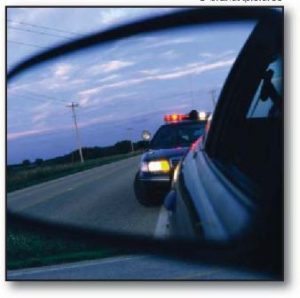





 4. Use adhesive side powder for lifting prints from the sticky side of tapes, packing labels, etc. Mix the side powder with water and dispersing agent until it reaches the consistency of thin paint, then apply it to the surface. Wait 10-15 seconds and then rinse with clean water. Presto! The print(s) appear instantly.
4. Use adhesive side powder for lifting prints from the sticky side of tapes, packing labels, etc. Mix the side powder with water and dispersing agent until it reaches the consistency of thin paint, then apply it to the surface. Wait 10-15 seconds and then rinse with clean water. Presto! The print(s) appear instantly.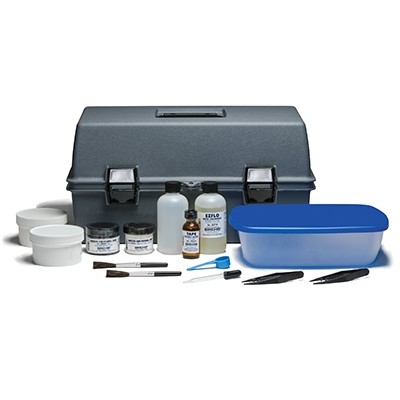
 8. Use SPR or Wet Print to ift prints from wet surfaces. By the way, both products are water-based, which means they cannot be used when temperatures are below freezing.
8. Use SPR or Wet Print to ift prints from wet surfaces. By the way, both products are water-based, which means they cannot be used when temperatures are below freezing.










